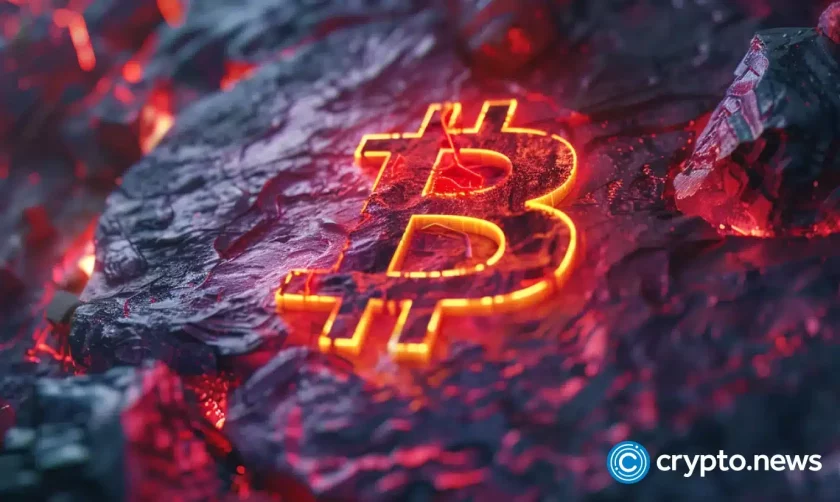Bitcoin (BTC), the pioneering cryptocurrency that sparked a global revolution in digital assets, operates on a unique monetary policy. One of the defining features of Bitcoin is its halving event, which occurs approximately every four years.
This article will explore the economics behind Bitcoin’s halving, examining its effects on price movements and market sentiment. By understanding these factors, investors and enthusiasts can gain valuable insights into the cryptocurrency’s market behavior.
Related: How does the monetary supply affect cryptocurrencies?
What is a Bitcoin halving?
A Bitcoin halving, also known as a “halvening,” refers to the predetermined reduction in the rate at which new BTC are created. It is programmed into the Bitcoin protocol and occurs every 210,000 blocks, which is roughly every four years. The halving event halves the block reward, reducing the number of newly minted Bitcoin awarded to miners.
Supply and demand dynamics
A Bitcoin halving directly impacts the supply and demand dynamics of the cryptocurrency. By reducing the rate at which new BTC enters the market, halving effectively reduces the available supply. As the supply decreases, assuming demand remains constant or increases, basic economic principles suggest that the price of Bitcoin should rise.
Supply and demand is the basic economic principle supporting a price increase in response to Bitcoin’s halving. The law of supply and demand states that prices tend to increase when a commodity’s supply declines, and demand either stays the same or rises. The Bitcoin halving slows the rate of new Bitcoin creation and market release.
As a result, there are fewer newly created BTC available for purchase. The diminished supply produces a scarcity effect, which might push the price upward if demand for Bitcoin stays the same or rises.
Bitcoin’s controlled supply is a key factor contributing to its value proposition. The total supply of Bitcoin is limited to 21 million coins, and the halving mechanism gradually reduces the rate at which new BTC are produced until the maximum supply is reached. This scarcity aspect, coupled with the increasing recognition and adoption of Bitcoin, can create a perception of limited availability and drive up demand, thereby impacting the price.
Historical price movements
Halving events have frequently been associated with increases in the price of Bitcoin, with significant upward momentum both before and after previous halvings. For example, during the 2012 halving, Bitcoin’s price soared from about $12 to over $200 in just one year. Similarly, Bitcoin experienced a stunning recovery after its 2016 price halving, reaching a high of about $19,700 in December 2017.
Following the most recent halving event in May 2020, Bitcoin’s price surged. Starting at $8,787 during the halving, the cryptocurrency experienced a remarkable rally, eventually reaching its all-time high of nearly $69,000 in November 2021.
Market attitude and investor perception
Bitcoin halving events often generate increased market attention and hype. Expectations of lower supply and likely price increases may fuel positive feelings among investors and traders. This optimism could result in higher demand for Bitcoin as traders try to profit from the expected price gain. As a result, a Bitcoin halving can result in the self-fulfilling prophecy of rising market sentiment and demand.
It is crucial to remember that during halving occurrences, market sentiment isn’t always favorable. Market participants may also experience FUD around the potential effects of a price halving. Short-term price swings and heightened volatility may result from this conflicting sentiment.
Impact on mining economics
The Bitcoin halving event may also impact mining economics. Block rewards and transaction fees are the primary sources of income for miners, which are essential to confirming transactions and safeguarding the Bitcoin network.
The decrease in block rewards caused by a halving event directly affects miner profitability. After a halving event, miners operating with increased expenses might find it less profitable to mine Bitcoin, which could result in a drop in mining activity.
Related: ‘Don’t short when it’s dark green’: How to trade the 2024 Bitcoin halving
Network security and long-term outlook
Bitcoin’s halving may initially impact mining economics, but it also plays a critical role in preserving the network’s long-term security and stability. Miners are encouraged to continue their activities and secure the network through transaction validation due to the carefully managed decline in block rewards.
The network becomes more robust and less dependent on freshly created currencies for security as the mining industry adapts to the decreased block rewards.
Collect this article as an NFT to preserve this moment in history and show your support for independent journalism in the crypto space.




